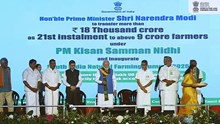
In a major push to protect underground ecosystems, Food and Agriculture Organization (FAO) of the United Nations has launched the Global Soil Biodiversity Observatory (GLOSOB). Announced during COP15, the initiative aims to become a global reference for scientific collaboration and policy design in the monitoring, measurement, and protection of soil biodiversity. This biodiversity includes various life forms found underground that are essential for crop productivity and genetic resilience.
The move is part of the Convention on Biological Diversity’s 2020–2030 action plan and is intended to support the implementation of the Kunming-Montreal Global Biodiversity Framework. While various knowledge-sharing platforms and initiatives exist, experts have highlighted the absence of standardised monitoring protocols and actionable strategies to integrate soil biodiversity into policy and national monitoring frameworks.
According to Jacob Parnell, lead author of a new commentary in Nature Ecology and Evolution, there is a pressing need for top-down coordination through GLOSOB, while also engaging the bottom-up networks already contributing to the field. The article outlines how GLOSOB will serve as a coordinating body to expand global coverage, address research gaps, and strengthen national capacities for soil monitoring.
Soil biodiversity is essential for agricultural soil fertility and plays a significant role in sustaining key food crops. Organisms living underground, including those in hyper-arid, acidic, or waterlogged farmlands, act as vital genetic reservoirs. However, many of these biodiversity hotspots remain outside protected or conservation-designated areas.
Experts warn that threats such as extreme climate events, land degradation, deforestation, invasive species, and pollution are endangering below-ground ecosystems. GLOSOB aims to confront these risks by defining improved indicators that track essential biodiversity variables (EBVs) across both taxonomic and functional dimensions.
Current data is relatively strong for microbial soil carbon and soil macrofauna like earthworms and nematodes. However, there is limited understanding beyond these, especially concerning enzymatic activity, nutrient cycling, and microbial genetic diversity. GLOSOB proposes a tiered system, starting from basic chemical and decomposition measurements and gradually moving towards advanced approaches like shotgun metagenomic sequencing.
FAO notes that realizing these goals will require investments in laboratory facilities, training programmes, and standardised monitoring systems. Another key priority is integrating biodiversity data into national soil surveys and information systems to enable accurate policy development and sustainable management practices.















